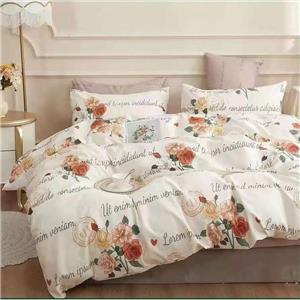Information About Thread Counts
So many people are confused about Thread Counts when buying bed linen. What does it all mean? How do I choose the right bed linen? Here is a little clarification for you.
What is Thread Count and how to choose the right bed linen for you?
Thread count is the number of horizontal and vertical threads woven in one square inch of fabric. A thread count quality can vary from 80 up to and beyond 1000. Essentially the higher the Thread Count, the softer the fabric will feel. However, this is not the only factor you should be concerned about when buying bed linen.
Manufacturers and Wholesalers have done a great job marketing bed linen placing the emphasis on Thread Count, defining the quality of bed linen. The higher the Thread Count doesn’t necessarily mean the fabric is last longing and durable. Other important and quite critical factors when making fabric for bed sheets are the Yarn size, Ply, and Fibers.
Yarn Size refers to the weight, thickness, and coverage of the fabric. This helps to determine performance characteristics. Bed linen sheets generally range from a yarn size of 40 to 100. The higher the number, the finer the yarn allowing more of them of fit in a square inch.
Ply is described as how many individual yarns are used as one strand. For instance, Single ply fabric will use only a single yarn, however a 2 ply fabric will have 2 single yarns twisted together and then woven. Essentially, if one was to purchase 2 ply bed sheets they would want to make sure that the yarn is of a finer quality, that is, a yarn size of 100. If it were to be a denser quality, then the sheets will feel incredibly thick and heavy.
Fibers are the backbone of the fabric. In regards to bed linen, sheets can be made from a different variety of cottons, cotton blends, polyester and now even bamboo along with other kinds of fibers.
Trends have dramatically changed over the past 5 years. Consumers would purchase a Polyester/Cotton blend because of its no fuss ironing characteristics. Now, 100% Cotton is in demand. It is allergy friendly and allows the skin to breath. Cotton also has other great characteristics such as comfortability, softness, absorbs and releases perspiration quickly, good colour retention, good strength, easy to handle, flame retardant, pleasant matte luster and good elasticity.
High quality Cottons such as Egyptian and/or Pima Cotton are extremely expensive. You can expect to pay an excess of double to common cottons. True Egyptian Cotton, due to the perfect conditions of humidity and rich soil along the Nile river in Egypt, allows the cotton to grow into long fibers or staples. This means the yarn will have exceptional properties of softness, strength and durability.
So there you have it, there are many important factors when choosing bed linen and I hope this helps you when choosing the right bed linen for you. It certainly has open my eyes!




